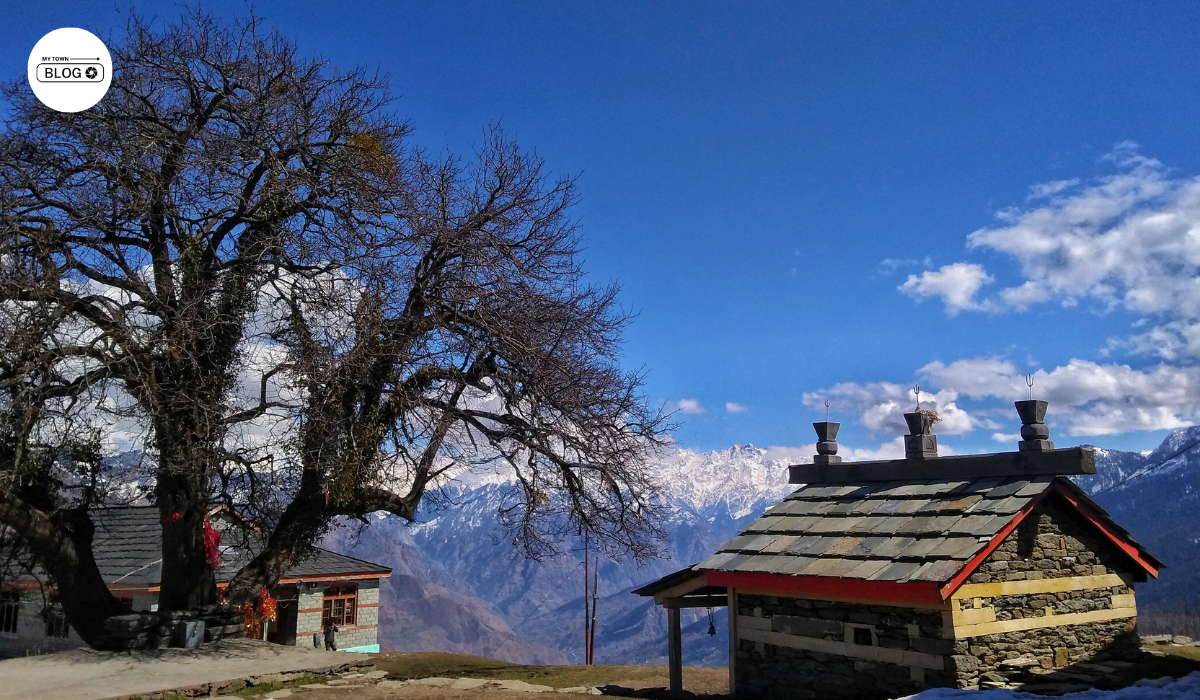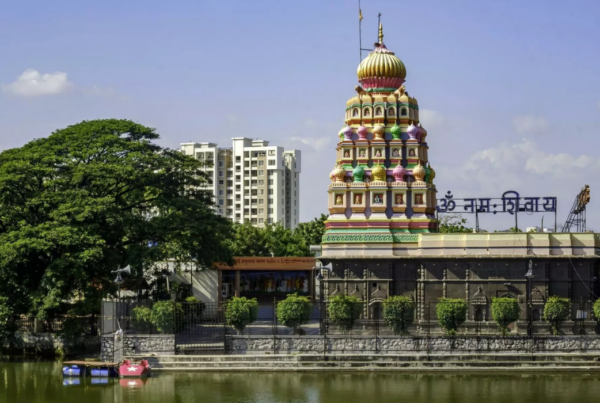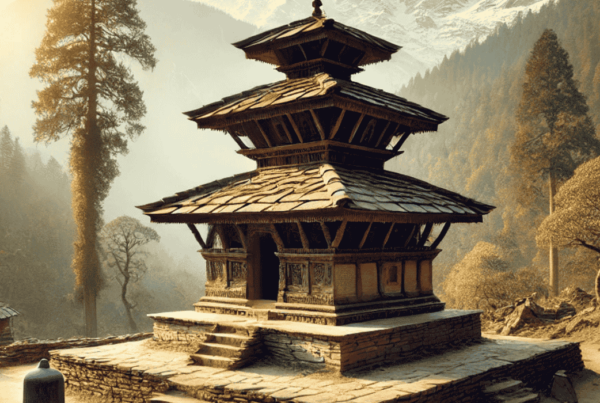The fabled Bijli Mahadev Temple is located in the Kullu region of Himachal Pradesh. This temple, one of the most well-known temples in the region, celebrates Lord Shiva. The temple sits on a hill close to the Beas River, at a height of 2,460 meters. It is among the most popular destinations in the area due to its position. The reason this temple is called Bijli Mahadev is because of a unique ritual taking place there.
History of Bijli Mahadev:
The Puranas, or Vedas, provide the Bijli Mahadev Temple’s historical account. It is thought that during their expulsion, the Pandavas constructed this temple. That is to say, the 20th century saw the construction of the current temple. The temple’s founding story is an unusual one.
According to local folklore, it is believed that the construction of the Shiva temple ensued after the vanquishing of a demon known as Kulanta. Legend has it that the devil Kulant wanted to submerge the valley by stopping the flow of the Beas River. He assumed the form of a dragon to carry out his plans to kill every life form on the planet by submerging it underwater. Lord Shiva came to rescue the people living here and to end the demon.
Local belief holds that the Bijli Mahadev mountain is said to have originated from the remains of a vanquished demon. To do this, Lord Shiva asked the devil to look back as his tail caught fire. As soon as he looked back, the Lord struck the demon with his mighty Trishul, which shattered the demon’s body into many parts. As per the directive of Mahadev, celestial lightning strikes the temple every twelve years, granted permission by Indra, ensuring the safeguarding of life in the vicinity from calamity. Mahadev Shiva protects people’s lives by taking a lightning strike at himself. Makhan, or butter, is applied to the shivling of the temple to treat strokes caused by lightning. This attribution has led to the temple also being referred to as Makhan Mahadev.
Architecture:
The temple’s remarkable wood and stone framework, which takes its cues from traditional Pahari architecture, emphasizes its plain but distinctive form. On a clear day, the snow-covered peaks of the Himalayan range can be seen, along with the amazing vistas of the Kullu Valley that the temple provides. The temple’s remarkable wood and stone framework, which takes its cues from traditional Pahari architecture, accentuates its straightforward yet distinctive style. The temple comprises a mandapa, a sanctum sanctorum, and a dome-shaped roof crowned with a gold-colored shikhara on top.
Trek to Bijli Mahadev Temple:
One can access the temple by trekking along a steep and winding mountain road from Chansari village. From the top of the hill, everything seems amazing. Reaching the summit of the nearly 3-kilometer trek takes two to three hours. Most of the route is hilly. The tour is exciting and relaxing because of the gorgeous scenery, waterfalls, and wide-open spaces. Both locals and visitors have made their way to the temple via one of the most well-liked climbs in the Kullu Valley.
Camping in Bijli Mahadev:
Visitors can camp at Bijli Mahadev. Some local people run shops here. They arrange to camp here. Should travelers desire, they have the option to set up their own tents. The facility operates according to the season. As night falls in the evening, you can cook, build a bonfire, and take pleasure in spending the night below the stars.
The Ideal Time To Go To The Bijli Mahadev Temple:
March to September
The best time to visit is during Shivratri. Where travelers and devotees from all over the world come to see and experience spiritual harmony.
Although the temple shuts its doors during the winter, the trekking route remains accessible.
During this time, snow blankets the entire temple. In summer, the weather becomes a bit muggy or humid, and the days get hot. During the monsoon season, the landscape transforms dramatically, as dark clouds envelop the Parvati Valley to one side and the Kullu Valley to the other, creating a breathtaking panorama around the peak. The view of the rain is lovely, and the trek becomes quite slippery. Additionally, witnessing the captivating display of lightning offers an unforgettable experience.
How to Reach Bijli Mahadev Temple:
By Bus:
The temple is situated 5.6 kilometers away from the Kullu bus stop. The temple is 60 km from Mandi.
By Air:
Kullu Manali Airport, located approximately 18.3 kilometers away, serves as the nearest airport to Bijli Mahadev Temple.
By Rail:
Joginder Nagar railway station is the closest to the temple, situated roughly 116 kilometers away.
To get to Bijli Mahadev, one must first travel from Delhi or another location to Kullu, the district headquarters. Next, travel from Kullu to Ramshila, which is a short distance away (about 1 km), and cross the Beas River bridge to continue to Bhuntar or Manikaran. Once you cross the bridge, ask a local to lead the way in the direction of Temple Hill. From Ramshila, there is a motorable road that leads to the parking lot, which is located 20 km beyond Chansari hamlet. The Chansari village is about 5 km from the parking area. It will be necessary to pay a parking fee. From here, it’s a 3–4 mile hike to Bijli Mahadev. Trekking takes two to three hours, with three to four breaks.
Also Read: Manikaran Sahib
Conclusion:
Situated in the beautiful Kullu Valley, the Bijli Mahadev Temple is a sanctified location devoted to Lord Shiva. It is a must-see location in Himachal Pradesh because of its amazing architecture, long history, and difficult trekking route, which provide visitors with a special fusion of faith and natural beauty.
FAQs:
What makes it known as Bijli Mahadev?
Because of the extraordinary ritual in which lightning hits the Shiva Lingam, denoting spiritual strength and safety, the temple is known as Bijli Mahadev.
What time of year is ideal to go there?
March through September is the best time to go, with Shivratri being an especially favorable time.
How can one reach the temple?
The closest points of contact are Joginder Nagar Railway Station, Kullu Bus Stop, and Kullu Manali Airport, in light of this. Visitors can travel to the temple by bus, plane, or rail.
Is camping allowed near the temple?
Camping is allowed in the area, subject to seasonal demand. One may camp by constructing their tent or using one of the many available from local sellers.
What should one predict from the hike?
With gorgeous vistas of the Kullu Valley and chances to take in the surrounding natural splendor, the roughly 3–4 km walk takes two to three hours to finish.








